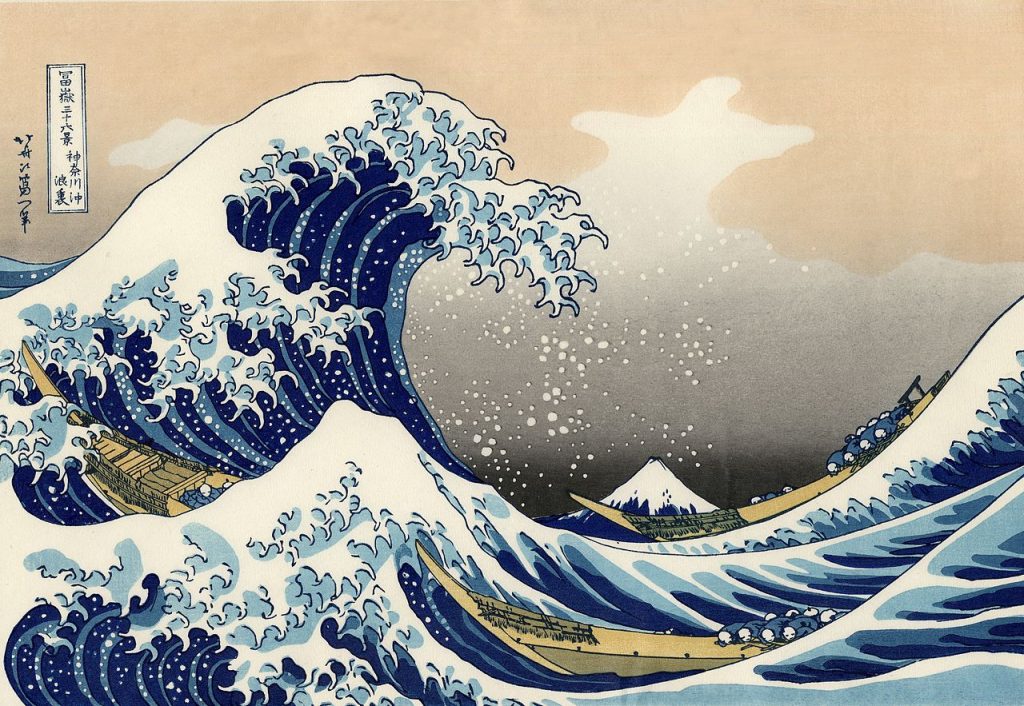If you happen to own a shirt that has the Kanagawa Wave print, you might be interested to learn some information which you probably don’t know about it yet. It’s quite funny when young people (or even us, older women sometimes!) wore t-shirts with this print without really understanding what the image is all about and the significant facts about the wave. So here are seven trivia that will enlighten you.
- It is not a painting but a woodblock printing which is an art genre in Japan called Ukyo-e. This was famous in the 17th century and made a comeback in the 20th century and mostly deals on the subject of historical tales and landscapes.
- It was created by Hokusai whose birth name was Tokitaro and was a son of a mirror fabricator to the shogun.
- Did you know that this woodprint was touted to be an inspiration of Claude Debussy’s orchestral composition called “La Mer?” It was also a subject of prose and poetry by Pearl S. Buck, Rainer Maria Rilke, and Hari Kunzru. Famous international brands like Patagonia and Levis has used this image as well for their marketing campaign years ago.
- According to Christine Guth, author of “Hokusai’s Great Wave: Biography of a Global Icon”, the print was a symbolization of military threats, economic power, and natural disaster.
- It was the Europeans who first discovered this woodblock print, not the Japanese.
- It is estimated that there are only 100 impressions left at present from the original print run of 5000.
- You can find some of the remaining impressions at the Metropolitan Museum of Art in New York, National Library of France, and the British Museum as part of their collection.
- The original artwork measures 25 cm. in length and 37 cm. in width.
So next time you wear a t-shirt with the simple yet popular Great Wave of Kanagawa print, you sure will now be able to explain its historical importance.





















